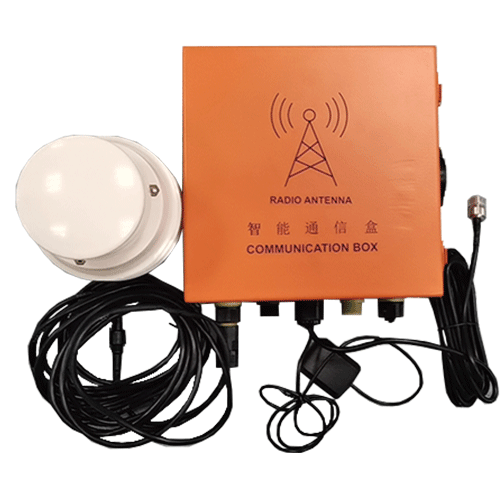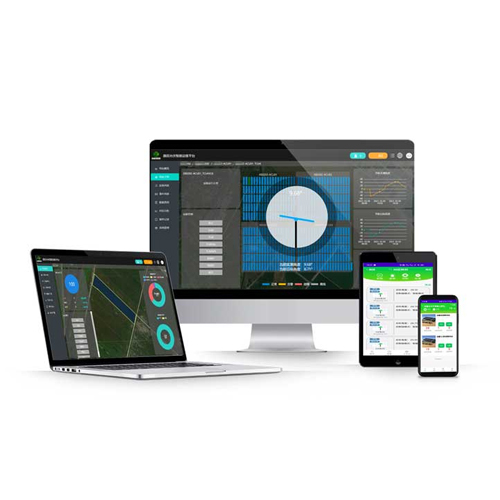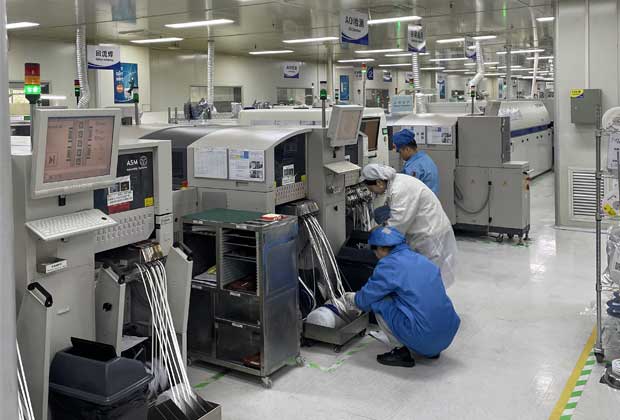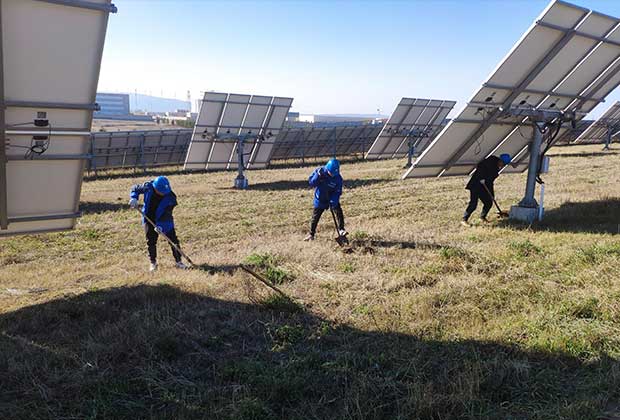Solar energy is a rapidly growing form of energy, and the solar market has grown significantly over the past decade.
The power generation of a photovoltaic system is not only related to the power and operating conditions of the panels, but also to the conversion efficiency of energy. Therefore, the installation method of the solar photovoltaic module array has a great influence on the efficiency of the solar power generation system. But solar energy suffers from low density, intermittent nature, and constant changes in light direction and intensity over time.
Most of the traditional solar photovoltaic modules are fixedly installed, that is, the panels are fixed at a certain angle and do not change with the change of the position of the sun, which will seriously affect the conversion efficiency.
It is estimated that if there is a 25° deviation between the photovoltaic system and the sunlight angle, the output power of the photovoltaic array will drop by about 10% due to the reduction of the vertically incident radiant energy. In order to solve this problem, the automatic sun tracking system is developed to maximize the intensity of sunlight perpendicular to the solar panel, thereby improving the photovoltaic conversion rate.
Ⅰ. Classification of PV tracking systems
At present, there are mainly two solar photovoltaic automatic tracking systems, including single-axis tracking and dual-axis tracking. Single-axis tracking can be divided into horizontal single-axis tracking and tilted single-axis tracking. Among them, horizontal single-axis tracking and tilting single-axis tracking have only one rotational degree of freedom, and dual-axis tracking has two rotational degrees of freedom.
These tracking systems use an active tracking control strategy, which calculates the position of the sun in the sky and controls the orientation of the photovoltaic array. This active photovoltaic automatic tracking system can be better applied to the environment with more frost, snow and sand, and can also work reliably in unattended photovoltaic power plants.
Therefore, how to improve the photovoltaic conversion rate by changing the angle of the cell panel with the light angle, this cuts into our theme, single-axis tracking system and dual-axis tracking.
Ⅱ. The difference between one-axis tracker and dual-axis tracker
1. Single axis tracking
The one-axis tracker has only one rotation axis to change the position and angle of the solar panel to maximize the intensity of sunlight perpendicular to the solar panel, thereby improving the photovoltaic conversion rate.
a. Horizontal single axis
The horizontal single-axis tracking system is mainly composed of: solar cell assembly mounting bracket, horizontal rotating shaft, rotating drive mechanism, electric control system and central control system.
This system is simple in structure, light in weight and easy to install. It adopts mechanical linkage control, with good reliability and high cost performance. The components are above the bearing seat. The bearing has strong sand-proof ability, strong fault identification ability and flexible response. In comparison, the power generation can be increased by 15%-20%. Horizontal single-axis tracking is suitable for use in areas with latitudes below 30 degrees.
b. Tilt single axis
The oblique single-axis tracking system is suitable for use in areas with latitude higher than 35 degrees. The system only needs one set of driving device and controller to realize the automatic tracking of a single array module or multiple array modules at the same time. The unique linkage structure and maintenance-free slewing bearing make it have reliable system stability and low failure. rate and low maintenance costs. Compared with the traditional fixed installation bracket, it can increase the power generation by 21%~35%, which is an ideal choice for the construction of large-scale power stations.
The difference between flat uniaxial and inclined uniaxial:
Because the flat uniaxial support has no inclination to the south, its radiation receiving ability is poor when the sun altitude angle is low, which is especially obvious in high latitudes. There has been a decrease, especially in winter, and the power generation is even lower than that of fixed mounts. The inclined uniaxial has a certain inclination to the south, so this situation is better than the flat uniaxial. But the oblique uniaxial also has its own limitations. Due to the inclination to the south, the north side of the inclined uniaxial support is higher and higher from the ground as the rotation axis grows, and because the rear column cannot be made too high, the rotation axis of the inclined uniaxial support is also limited. It cannot be made into a single shaft as long as a single shaft, but can only be independent one by one, which increases its cost and, of course, increases the floor space.
2. Dual axis tracking
Dual-axis tracking, as the name suggests, refers to an axis of rotation with two directions. This allows the panels to track the sun in both the azimuth and altitude of the sun. So as to achieve that the panels remain perpendicular to the sun's rays. The dual-axis tracking photovoltaic array moves along two rotation axes, which can track the changes of the azimuth and altitude angles of the sun at the same time. In theory, the trajectory of the sun can be completely tracked to achieve zero incident angle. Dual-axis tracking is suitable for use in areas with latitudes higher than 35 degrees, which can increase power generation by 35%-43%.
 English
English  中文
中文




